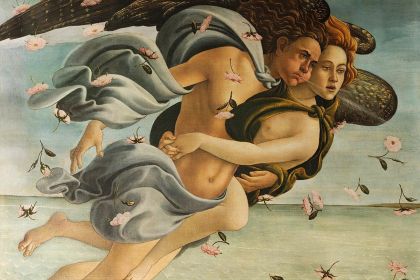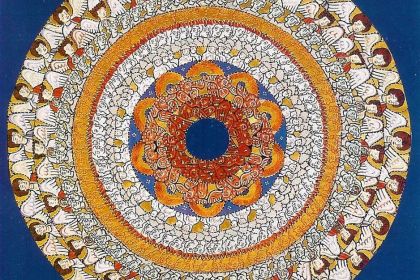Manuscript
Rich music collection of the Trecento times recovered from Florentine palimpsest
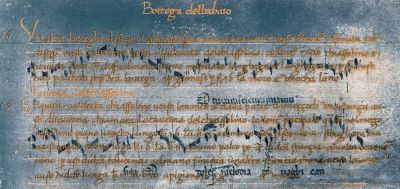
The San Lorenzo Palimpsest
Music Period: Medieval
Composer: Jacopo da Bologna, Francesco Landini, Guillaume de Machaut, Jacob Senleches, Philippe de Vitry, Vincenzo da Rimini
It is difficult to imagine, in the current digital world, the serious difficulties associated with recording any information. The lack of stationery for all types of art and science forced the manuscript writers of the past to reuse sheets by removing the previous content, a practice that in part resembles daily operations with digital media of every modern person.
And so the palimpsests appeared—manuscripts in which historians search for data potentially more historically important than the visible input of the upper layer. Naturally, the musical world has been also enriched with new pieces thanks to the scientists who are diving deeper into enigmatic books and scrolls with the help of rapidly developing technologies.
In 1982, the vast music collection known as the San Lorenzo Palimpsest was discovered under the records of the 15th-century administrative ledger. There have been made several attempts to identify the compositions—a task made difficult not only by the poor state of the erased content but also because the musical manuscript was disassembled and then put together in a different order.
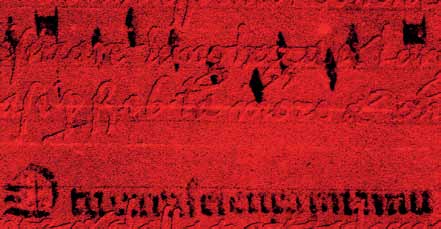
At present, the 14th-century music collection of Franco-Flemish and Italian music has been mostly restored and contains around 200 works by famous composers and completely unknown artists. More than 20 names are mentioned in the medieval manuscript, including Antonio Zacara da Teramo, Bartolino da Padova, Bernard de Cluny, Donato da Firenze, Francesco Landini, Magister Franciscus, Gherardello da Firenze, Giovanni da Cascia, Giovanni Mazzuoli, Grimace, Guillaume de Machaut, Humbertus de Salinis, Jacob de Senleches, Jacopo da Bologna, Paolo da Firenze, Philippe Rollart, Philippe de Vitry, Piero Mazzuoli, Ugolino da Orvieto, and Vincenzo da Rimini.
The period of activity of the composers cited in the San Lorenzo Palimpsest falls on the late medieval period for reference to which the term Trecento is used in Italy, while in Low Countries and France the period is described as Ars Nova.
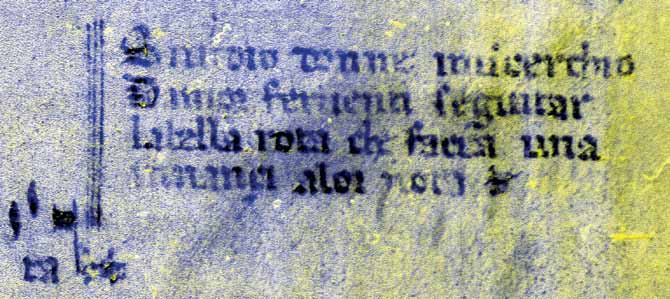
In recent decades attention to the history of early music has greatly increased, allowing a large number of medieval music enthusiasts to provide fans with excellent recordings performed on authentic instruments in order to give the listener a correct impression of the real sound of the 14th century.
Out of the multitude of names featured on the San Lorenzo Palimpsest, a group of six—listed below—can be singled out as the most intriguing and influential.
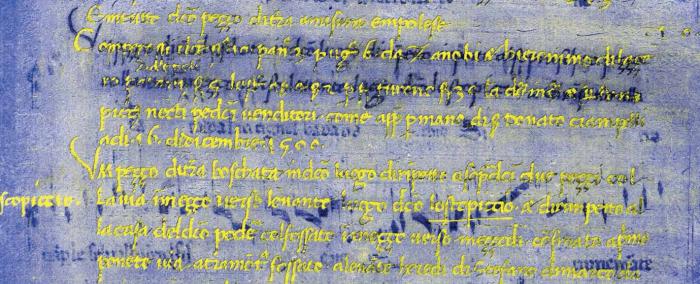
An Italian composer Jacopo da Bologna, who flourished in the mid-14th century, is known for putting out more than 30 polyphonic vocal compositions as well as a short theoretical treatise describing the French notational theory.
Although Jacopo da Bologna held solid positions in powerful courts, such as the Visconti of Milan, no biographical data has survived. However, many music manuscripts indicate that his compositions circulated widely around Italy and were highly regarded long after his death.
Listen to Jacopo da Bologna's Posando Sopra Un'acqua performed by La Reverdie:
French music theorist, composer, and poet Philippe de Vitry (1291—1361) served as an adviser to Charles IV and to his successors at the royal court of Paris. Vitry was considered one of the leading intellectuals of his time, kindly praised by Petrarch:
"...[Vitry] was the keenest and most ardent seeker of truth, so great a philosopher of our age."
Vitry’s historical significance is mainly determined by Ars Nova, his treatise which dealt with the theoretical aspects of French music, including the innovations in musical notation and concept of isorhythm. Unfortunately, most of Vitry’s compositions were lost, and only some of the motets have survived.
Listen to Philippe de Vitry's Garrit Gallus Flendo Dolorose performed by Sequentia:
Francesco Landini (1335—1397) reached his fame not only as a composer, but as a singer, poet, organist, philosopher, and passionately devoted citizen of Florence. He is also credited with the talent of the musical instrument designer, although it might be contradicted by the reports of his blindness caused by smallpox in his childhood.
Famed during his lifetime for having extraordinary musical memory, Francesco Landini was also known for high improvisational skills and virtuosic performances of his own pieces on the portable organ, flute, and rebec. His preserved legacy consists of near 150 songs written for two and three voices. The nature of his music was described by one of his contemporaries:
"... the sweetness of his melodies was such that hearts burst from their bosoms."
Another interesting fact concerns the сomposer's name itself and alleges it is the eponym of Landini cadence formula that was common in 14th-century music. In this cadence, the leading tone drops to the sixth of the scale before approaching the final tonic note.
Listen to Francesco Landini's Questa Fanciulla Amor performed by La Reverdie:
French poet and musician Guillaume de Machaut (1300—1377) was admired by his contemporaries as a master of a short poem and regarded as one of the leading Ars Nova composers. For the majority of his life, Machaut served as chaplain and secretary in the court of John of Luxembourg, king of Bohemia.
It is believed that Machaut made a huge contribution to the development of secular motet by masterly composing three- and four-voices melodies. The wide distribution of his music in manuscripts reveals that he was esteemed not only in France but also in Italy, Spain, and much of the rest of Europe.
Listen to Guillaume de Machaut's Agnus Dei performed by Jeremy Summerly:
Not a lot is known of the life of Franco-Flemish composer Jacob de Senleches, and the few existing facts mostly cover the period from 1382 to 1395 when he served in the courts of Gerona and Castile while also working as a harpist with Cardinal Pedro de Luna who was later to be installed as Pope Benedict XIII.
Despite the small number of survived compositions, Jacob de Senleches is counted among the central personalities of Ars Subtilior—a musical style characterized by rhythmic and notational complexity contrasted with Ars Nova. Jacob's works for the harp were some of the most complex and intricate for the time, and his French lyrical songs where composed for three voices.
Listen to Jacob Senleches' La Harpe de Mélodie performed by Ferrara Ensemble:
All of the biographical details concerning Italian musician Vincenzo da Rimini are circumstantial, and just six of his compositions have survived to date.
Scholars have proposed that he lived at a Benedictine monastery in Regola between 1362 and 1364, while some of his lyrics allude to his service at the Alberti family in Florence.
Listen to Vincenzo da Rimini's Nell’acqua Chiara performed by La Reverdie:

